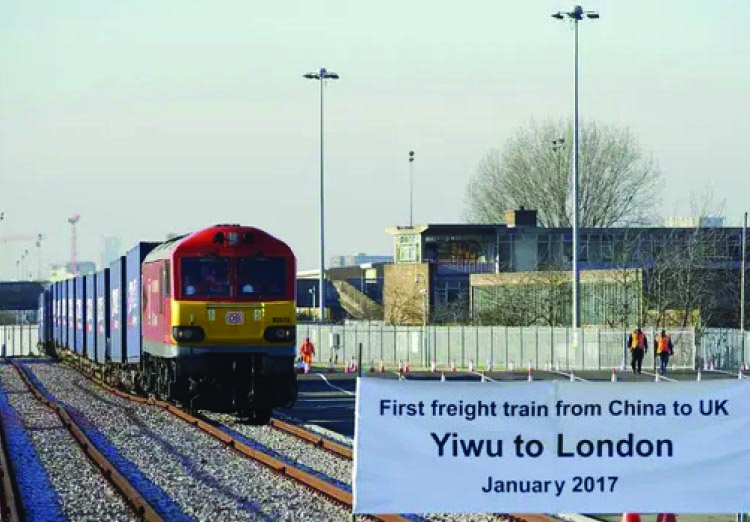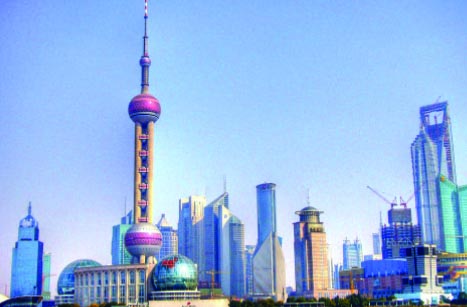
I had the rare opportunity to teach for one school year in 1985-86 at the Shanghai University of Finance and Economics as a visiting professor. I was invited to teach something unfamiliar to both students and faculty at that time: Western Economics. I consider this one-year stint a very significant experience.
I have since looked at photos of China from before and after its reforms, recalling vividly what the before pictures looked like. I now fully appreciate and marvel at the changes that have taken place over the last decades, as China went full speed in its development efforts.
Since it adopted an open-door policy and market system reform 40 years ago, China has witnessed unprecedented economic growth and remarkable achievements.
It is now the second largest economy in the world and the largest when adjusted for purchasing power parity.
On average, gross domestic product (GDP) has doubled every seven years and has grown 80 times since the 1960s. Economic growth skyrocketed since it joined the World Trade Organization (WTO) in 2001.
It is currently the largest trading partner of many countries, and since the 1990s, it has become the main driving force of the global economy.

Massive amounts were spent on investments, resulting in further growth, especially on material projects, such as transportation infrastructure (roads, bridges, airports, trains) that can be seen all over China, including in remote areas, as well as bullet trains; the “HK-Macao-Zhuhai-Guangzhou 55-km length bridge;” the recently-opened Daxing Airport in Beijing, which operates a 5G check-in system and dispensing with physical boarding passes, and many other recent major public infrastructure projects.
Industrial development is another investment focus. China’s manufacturing has benefited from a solid industrial base established in the early years of the country’s regime.
Investments have increased the capacities of manufacturing, encouraged the development of new industries, and promoted more holistic R&D for technological improvements.
China’s 5G Technology, now the envy and fear of the United States (US), did not just appear overnight. Once labeled as a “copy-cat,” Chinese technology is now being copied by Western giants.
Another important investment undertaken by China is in human capital development. Extensive reforms were made to improve health services, the education systems and academic institutions, especially universities.
Over the last four decades of growth, China has lifted 700-800 million of its people, about half of its population, out of poverty, reducing world poverty by 20 percent, a major achievement often cited by the United Nations (UN).

Initially, the reduction in poverty in China was accompanied by rapid and severe regional inequality, as its economic reforms were concentrated in eastern coastal regions. This inequality prompted China to aggressively focus on an ambitious program to develop its impoverished western region.
This endeavor in economic development was more spread out, reducing inequality. The result is the emergence of mega cities in the west such as Chengdu and Chongqing, and the development of the western rural areas, and addressed issues involving the minority ethnic groups.
In the international front, China came out from its secluded past and gradually developed diplomatic relations with a lot of countries. Globalization and good diplomacy enabled China to integrate with all regions, both developed and less developed countries.
The Asian Economic Crisis in the late 1990s provided China the opportunity to demonstrate its economic resiliency and capability, as well as its willingness to assist countries affected by the crisis. During the Global Financial Crisis a decade later, China demonstrated its good policies in managing the macroeconomy, helping prevent the global economy from deepening into a recession.
Although a global economic power, China still considers itself a developing country (in terms of GDP per capita, China is ranked 67th, even behind countries like Malaysia and Greece). It has expressed willingness to share its development experiences and extend assistance to other poor countries.
Since the 2000s, many countries in the African continent have been recipients of China’s ODAs (Official Development Aid) for infrastructure construction, technical education and others which helped jumpstart the development process of the local economies. Such assistance has also been extended to developing countries in the ASEAN, making China a major source of ODA and investment in the world. It is an active player in multilateral organizations and forums to help solve global issues such as climate change and the Industrial Revolution 4.0.
In 2017, Chinese institutions joined over 100 other scholarly organizations that endorsed Open Access, demonstrating its long-standing commitment for the unrestricted sharing of scientific data and findings. All these conveys to the world that China is taking the role of being a world power responsibly.

The Belt and Road Initiative, launched in 2013 by President Xi Jinping, is the latest of China’s major initiative that already involves the cooperation of 65 countries across Eurasia and Africa. It aims to connect continents and promote greater trade and communication between them.
In 2017, the China-London freight train was launched, and cut the travel time and cost in half between the two countries. (The World Bank reported that China’s rails are a third cheaper than those of other countries.) Many African countries are in fact integrated into the Belt and Road Initiative, with China-funded infrastructure development since the 2000s.
When I see all the changes and achievements and recall how things were 34 years ago when I first stepped on Chinese soil, I realized China has come a long, long way. Its achievement in the last 40 years has been nothing short of a miracle.
From an environment of isolation, restrictions, and shortage then, the people now enjoy a higher standard of living, more freedom, and better quality of life; all of which have not come without the challenges and growing pains of a developing country with 1.4 billion people, with many going from poverty to wealth in just half a generation.
Given the new-found role of being a global power, and given the generally limited and often biased knowledge people have on China, China has exerted more effort to promote understanding of the country – its language, culture, history, and civilization – through people-to-people interactions.
The Confucius Institutes established all over the world are contributing in this endeavor. There are funded scholarships for deserving students to learn about China and trainers are deployed to help uplift skills of those willing to learn.
I hope that the world gives China due credit, and learn to cooperate with China for its own development. Lastly, I hope that China remains patient as the world adjusts to China taking its new place in the world stage.
